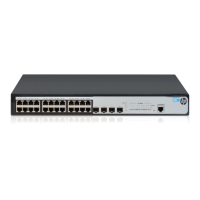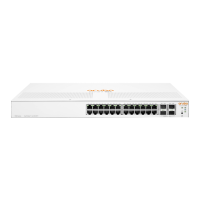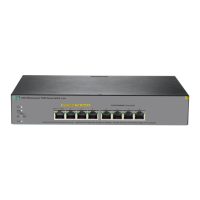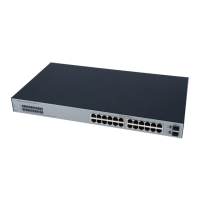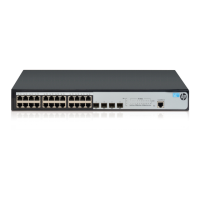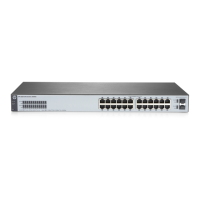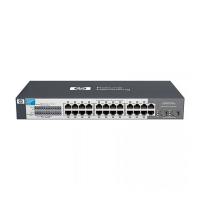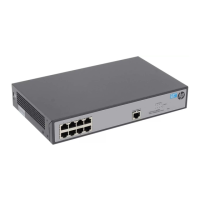193
Step Description
3
The device compares the calculated configuration BPDU with the configuration BPDU
on the port of which the port role is to be defined, and acts depending on the
comparison result:
• If the calculated configuration BPDU is superior, the device considers this port as the
designated port, and replaces the configuration BPDU on the port with the
calculated configuration BPDU, which will be sent out periodically.
• If the configuration BPDU on the port is superior, the device blocks this port without
updating its configuration BPDU. The blocked port can receive BPDUs but cannot
send BPDUs or forward data.
When the network topology is stable, only the root port and designated ports forward user traffic.
Other ports are all in blocked state to receive BPDUs but not to forward BPDUs or user traffic.
Table 55 Selecting the optimum configuration BPDU
Step Actions
1
Upon receiving a configuration BPDU on a port, the device compares the priority of
the received configuration BPDU with that of the configuration BPDU generated by
the port. It takes one of the following actions:
• If the former priority is lower, the device discards the received configuration BPDU
and keeps the configuration BPDU the port generated.
• If the former priority is higher, the device replaces the content of the configuration
BPDU generated by the port with the content of the received configuration BPDU.
2
The device compares the configuration BPDUs of all the ports and chooses the
optimum configuration BPDU.
The following are the principles of configuration BPDU comparison:
a. The configuration BPDU with the lowest root bridge ID has the highest priority.
b. If all the configuration BPDUs have the same root bridge ID, their root path costs are compared.
For example, the root path cost in a configuration BPDU plus the path cost of a receiving port
is S. The configuration BPDU with the smallest S value has the highest priority.
c. If all configuration BPDUs have the same root bridge ID and S value, their designated bridge
IDs, designated port IDs, and the IDs of the receiving ports are compared in sequence. The
configuration BPDU that contains a smaller designated bridge ID, designated port ID, or
receiving port ID is selected.
A tree-shape topology forms when the root bridge, root ports, and designated ports are selected.
The following is an example of how the STP algorithm works. Figure 179 pr
ovides an example showing
how the STP algorithm works.
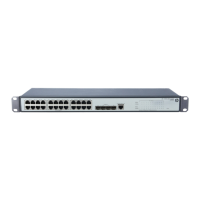
